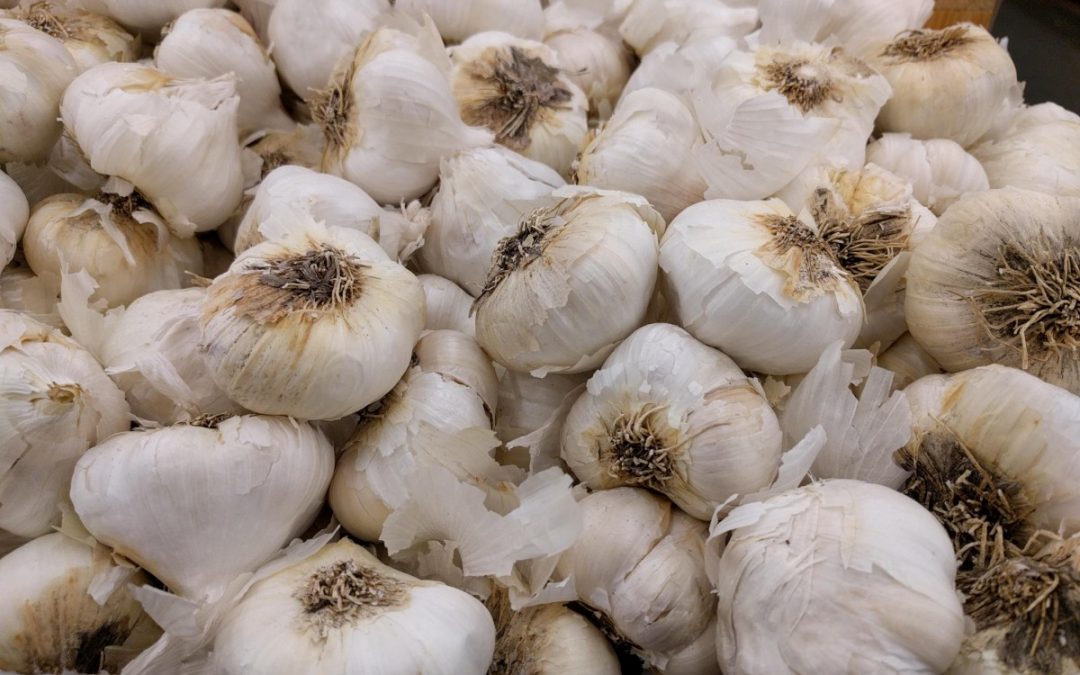



Article by: Hari Yellina
According to Ken Christopher of Christopher Ranch in Gilroy, California, “the first shipments of fresh crop garlic went out to consumers on the West coast and on the East coast, the early part of this week.” The crop contains more than 100 million pounds of garlic, and harvesting is anticipated to continue through early August. More people are hopeful about the California crop this year. “Weather patterns have been unpredictable during the past few years. We’ve experienced warmer summers and later, cooler springs than usual, along with a lot of rain, which complicated things greatly. For the best results, garlic needs good, cold winters and extremely warm late spring and early summer. The first time in years that we’ve genuinely seen that weather pattern,” says Christopher.
While the volume is comparable to the crop from the previous year, the quality is different. There isn’t any staining on the skin of the garlic because there weren’t any late spring rains that would have affected a ground crop like garlic. The most valuable component of our sales approach, more white fresh bulbs are now readily available in the fresh market, according to him. Because not every garlic was as aesthetically pleasing as some of it was last year, Christopher Ranch went to markets like the industrial one. The crop is once again grown entirely in California thanks to the better growing conditions. “Due to problems over the previous few years, we’ve had to import quantities from Argentina, Mexico, and Spain for a few customers,” says Christopher.
We are a 100% California garlic programme once more because this year we are not experiencing those problems. Meeting the continually rising demand for garlic will be made easier by this predictability. Demand increased at a typical rate for a mature industry like agriculture, or between 3-5 percent every year, when he initially joined the company about ten years ago, according to him. “However, everything changed when COVID struck. Demand increased between 10 and 20 percent year over year. Since we only produce garlic once a year, we were pleased to see that, but it was also difficult. Garlic demand has continued to climb after the pandemic, exceeding previous patterns. “I believe that it is still a result of families being used to eating at home. People are going out a bit less,” Christopher says.
Nevertheless, despite the robust crop, high inflation rates are driving up the cost of producing inputs, and it is projected that garlic prices will rise as well, varying from five to 10 percent, depending on the product. Christopher mentions that the federal government is considering lowering the tariffs on Chinese goods entering the United States, including garlic, keeping in mind the inflation. “Back in 2018, we successfully fought for Chinese garlic to be included to that tariffs list, and we’re going to work with everyone we need to to make sure it stays on that list. That represents our immediate dilemma, he argues. “While the government is doing the right thing by attempting to reduce inflation, we continue to believe that there is an inherent risk to the garlic business if Chinese garlic is taken off that list.”